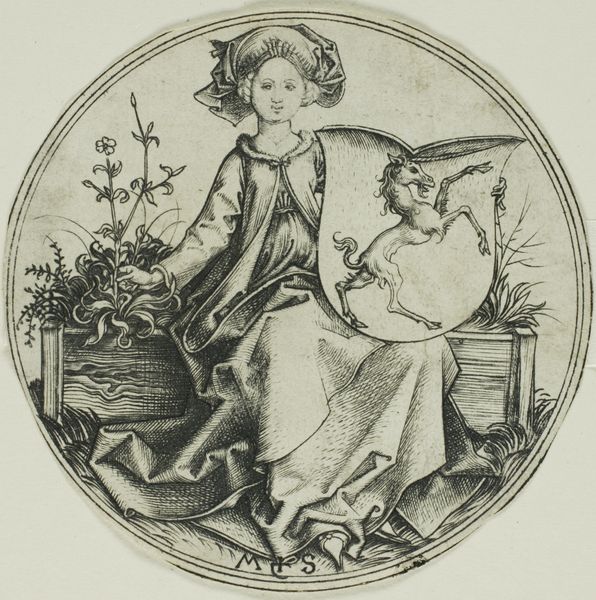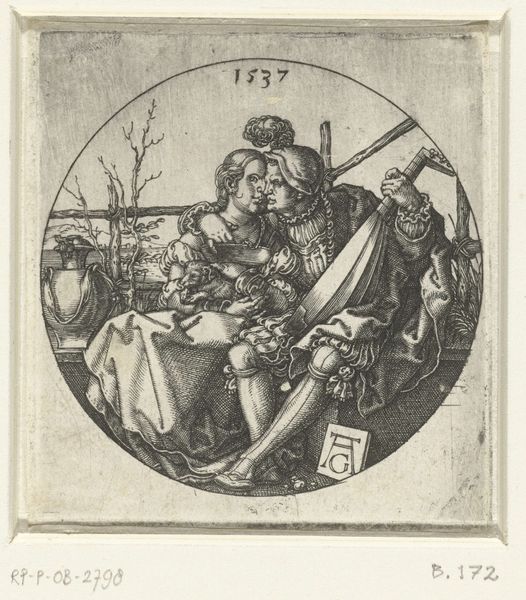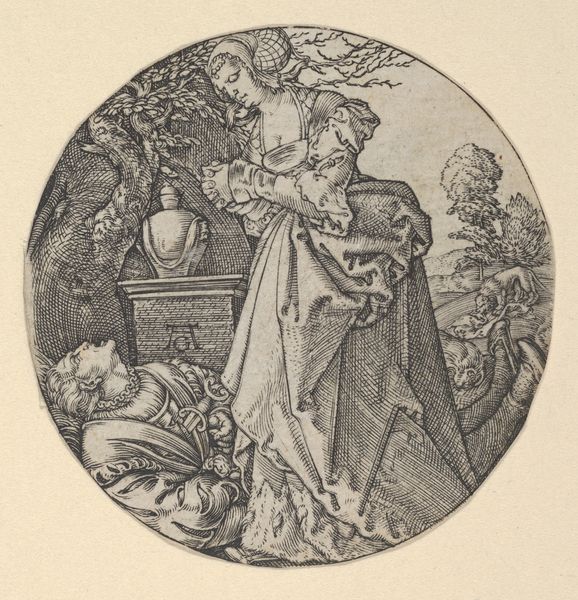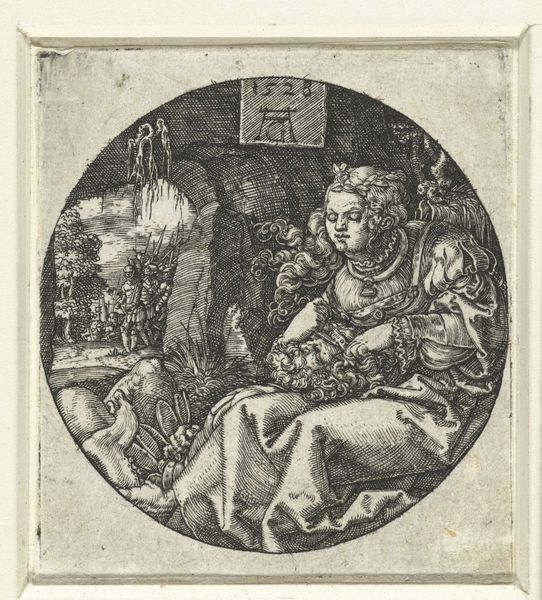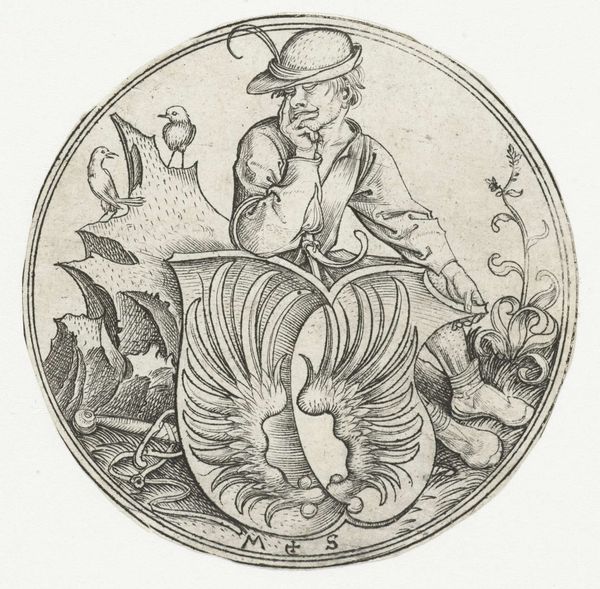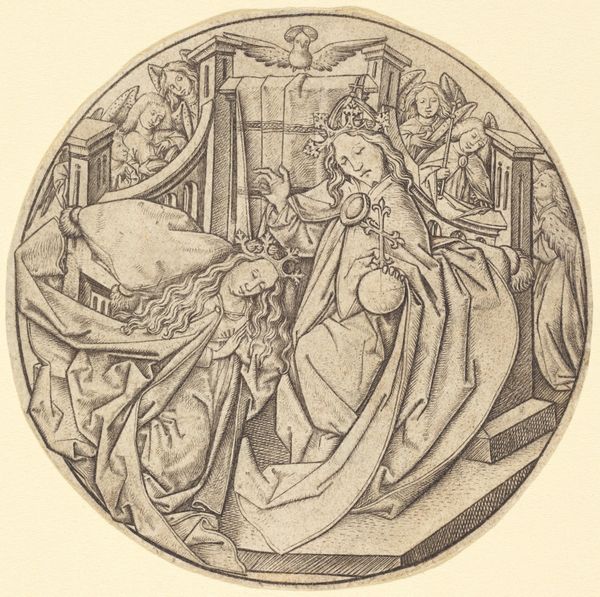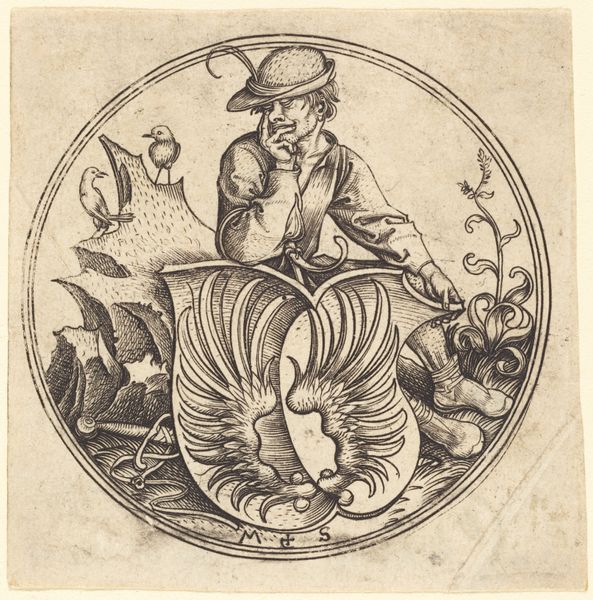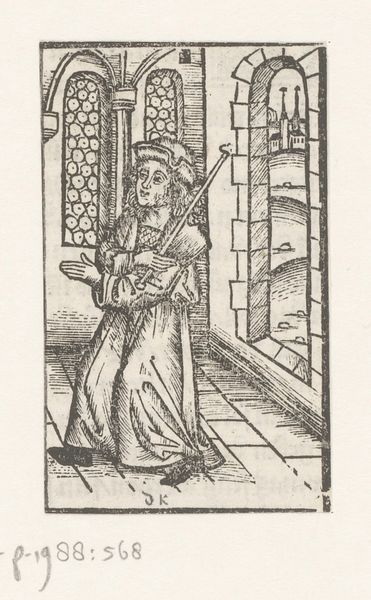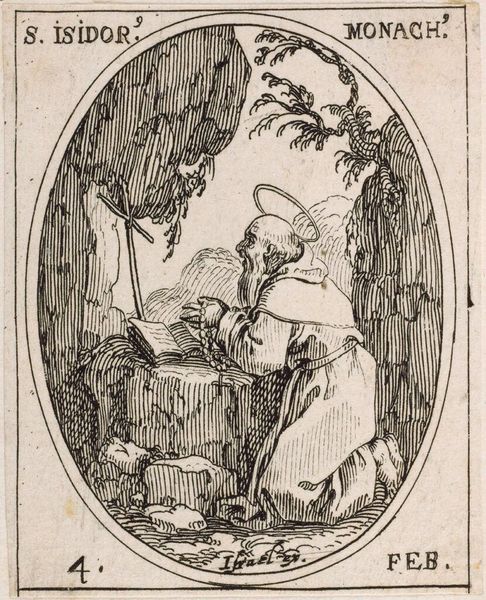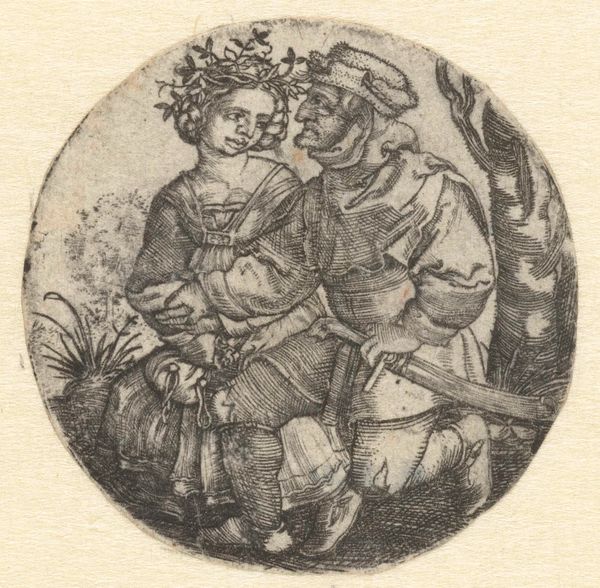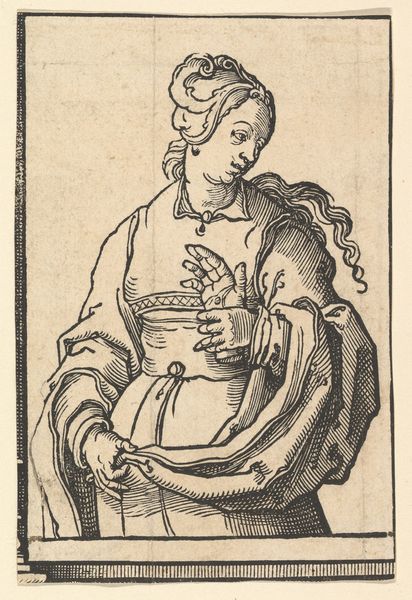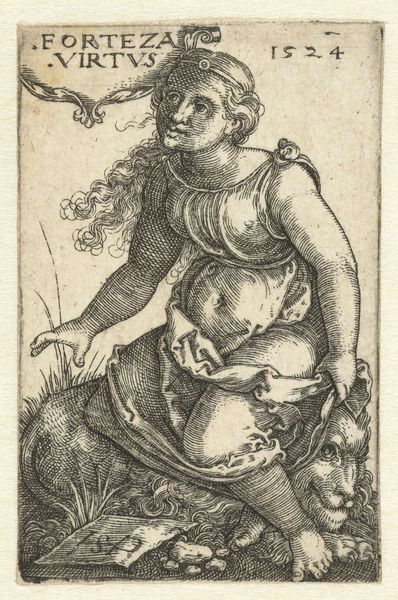
engraving
#
portrait
#
medieval
#
old engraving style
#
figuration
#
genre-painting
#
engraving
Copyright: Rijks Museum: Open Domain
Curator: I'm struck by the weightiness conveyed by this engraving, a work by the Master of the Amsterdam Cabinet from around 1475-1480. Look at the deliberate lines used to construct "Spinning Peasant Woman with a Blank Escutcheon." Editor: Yes, there's something almost somber about it. The stark contrast of the engraving creates this gritty feeling. What's your take on the symbolic choices here, beyond the stark materiality of it all? Curator: Well, let's consider the means of production. This engraving technique allows for multiples, making imagery accessible. This peasant woman isn't romanticized, her labor plainly represented. The stark shield presents such possibilities... or lack thereof. The engraver shows their mastery, pushing against class boundaries in their artistic output and depicting class boundaries with the shield. Editor: Exactly! That blank shield really opens up an intersectional reading. Who is allowed heraldry? What does it signify about belonging, gender, or access to resources in this period? Showing this laboring woman alongside that empty symbol critiques rigid societal structures that valued heraldry over useful labor. Curator: I'm also intrigued by how the image's circulation would influence its reading. How does an item like this interact with early capitalist networks and impact notions of class and gender? This reminds us that consumption has a history, too! Editor: I agree. How might early viewers interpret her plain attire versus the promise of the shield's potential grandeur? Was the artist trying to convey a subversive message? Considering this within its original socio-economic environment brings up complex questions about women, labor, and visual language. Curator: Seeing the woman juxtaposed with the empty heraldic shield gives it so much material weight. Every choice regarding her craft matters here. We feel it right down to our fingers! Editor: Absolutely, looking through the historical framework surrounding labor, art, and representation creates space for such important dialogues. It transforms what looks like a basic genre scene into an opportunity for insightful contemporary analyses.
Comments
No comments
Be the first to comment and join the conversation on the ultimate creative platform.

